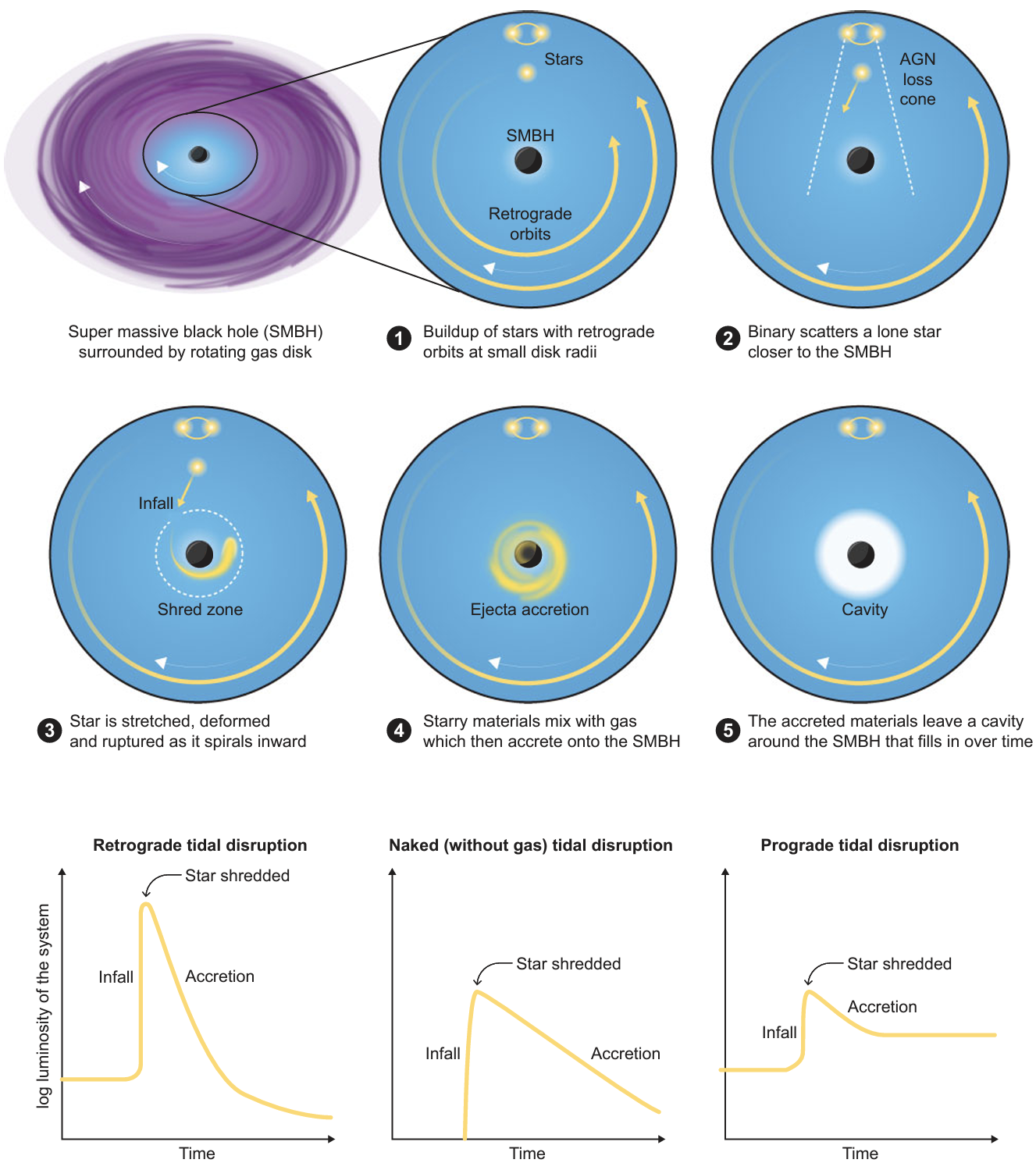1. The Impact of Shocks on the Vertical Structure of Eccentric Disks
Unlike circular orbit disks, the vertical gravity in eccentric disks varies around the orbit. We investigate some of the dynamical effects of this varying gravity on the vertical structure using hydrodynamics simulations. We find that time-dependent gravitational pumping generically creates shocks near pericenter; the energy dissipated in the shocks is taken from the orbital energy. Because the kinetic energy per unit mass in vertical motion near pericenter can be large compared to the net orbital energy, the shocked gas can be heated to nearly the virial temperature, and some of it becomes unbound. These shocks affect larger fractions of the disk mass for larger eccentricity and/or disk aspect ratio. These effects could be a potentially important energy dissipation and mass-loss mechanism. See our paper!
See the movie showing the evolution of the vertical structure of an eccentric disk with eccentricity of 0.9!
2. Tidal disruption events in active galactic nuclei disks
As active galactic nuclei (AGN) ‘turn on’, some stars end up embedded in accretion discs around supermassive black holes (SMBHs) on retrograde orbits. Such stars experience strong headwinds, aerodynamic drag, ablation, and orbital evolution on short time-scales. The loss of orbital angular momentum in the first ∼0.1 Myr of an AGN leads to a heavy rain of stars (‘starfall’) into the inner disc and on to the SMBH. Signatures of starfall include optical/UV flares that rise in luminosity over time, particularly in the inner disc. Retrograde AGN TDEs are overluminous and short-lived as in-plane ejecta collide with the inner disc and a lower AGN state follows. Prograde AGN TDEs add angular momentum to inner disc gas and so start off looking like regular TDEs but are followed by an AGN high state. Searches for such flare signatures test models of AGN ‘turn on’, SMBH mass, as well as disc properties and the embedded population. See our paper!
See the cartoon illustrating the model of starfall!
As a follow-up, using the moving-mesh hydrodynamics simulations with AREPO, we investigate the dependence of debris properties in in-plane TDEs in AGN disks on the disk density and the orientation of stellar orbits relative to the disk gas (pro- and retro-grade). See our paper!
Key findings are:
- Debris experiences continuous perturbations from the disk gas, which can result in significant and continuous changes in debris energy and angular momentum compared to `naked’ TDEs.
- Above a critical density of a disk around a SMBH with mass M (ρ_crit∼10^−8g cm^−3(M/10^6M⊙)^−2.5) for retrograde stars, both bound and unbound debris is fully mixed into the disk. The density threshold for no bound debris return, inhibiting the accretion component of TDEs, is ρ_crit,bound∼10^−9g cm^−3(M/10^6M⊙)^−2.5.
- Observationally, AGN-TDEs transition from resembling naked TDEs in the limit of ρ^disk≲10^−2ρ_crit,bound to fully muffled TDEs with associated inner disk state changes at ρ_disk≳ρ_crit,bound, with a superposition of AGN+TDE in between. Stellar or remnant passages themselves can significantly perturb the inner disk. This can lead to an immediate X-ray signature and optically detectable inner disk state changes, potentially contributing to the changing-look AGN phenomenon.
- Debris mixing can enriches the average disk metallicity over time if the star’s metallicity exceeds that of the disk gas.
See movies below and more here!
•Prograde case with a maximum mid-plane disk density of 10^-8 g cm^-3
•Retrograde case with a maximum mid-plane disk density of 10^-8 g cm^-3

